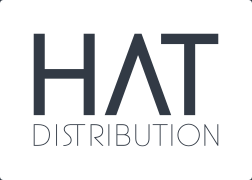As we move into 2024, Local Governments in Australia are facing unprecedented cyber risks with recent reports showing glaring shortcomings in how local government organisations approach cyber security.
With local governments operating critical infrastructure assets like sewage and water, cyber gaps create opportunities not just for data theft, but for disruption to entire physical systems and essential services.
Governance, Capability And Funding Gaps in Local Government Networks
In the past, Australian cybersecurity thought leaders believed that local government areas (LGAs) were unlikely targets for hacking. However, in 2021, a high-profile cyberattack on Melbourne’s Stonnington council changed this perception, highlighting the need for enhanced cybersecurity in LGAs. The Australian Cyber Security Centre (ACSC) also emphasised the attractiveness of LGAs as targets due to their essential service responsibilities.
Despite increased awareness, LGAs have not adequately addressed cyber threats. The NSW Auditor General’s Financial Audit Local Government 2022 report revealed that 47 percent of NSW councils lacked essential governance and internal controls for managing cybersecurity.
In 2023, two major cyberattacks occurred, one targeting a rural council and another alarming attack on the ACT government. LGAs remain vulnerable to ransomware and other cyber extortion attacks, with Business Email Compromise (BEC) being a common threat. Additionally, attackers are increasingly targeting operational technology (OT), which can have severe physical consequences, disrupt services, and harm the environment, necessitating further protection efforts.
The reasons why LGAs are falling short are manifold:
- Governance Issues: Many small LGAs are still basic internal controls, risk management frameworks and cyber risk policies.
- Lack of Executive Buy in: Some executives still don’t fully understand the risks associated with cyber. Attacks in LGAS. Therefore funding and resources remain limited.
- Budgeting and Resource Limitations: Many Australian local councils are struggling financially, particularly in rural, regional and remote areas. Budgets are typically assigned annually and have little flex when it comes to threat response.
- OT Management Issues: Security teams have traditionally been focused on IT networks, leaving gaps in risk management capabilities associated with internet connected OT networks. On the flip side, few OT network engineers understand the intricacies of cyber security, leaving fundamental gaps in knowledge and capabilities.
- Intelligence Sharing: A lack of collaboration and information sharing across LGAs is increasing cyber risk, particularly for small councils lacking internal security teams.
The Brightest and the Best: Top LGAs leverage Paessler
Australian Local Government Areas (LGAs) are increasingly acknowledging the critical need for robust network monitoring and security resilience, especially in the face of mounting cyber risks. Paessler, with its comprehensive monitoring solutions, stands out as a valuable ally for local governments in this endeavour. By leveraging Paessler’s capabilities, LGAs can significantly enhance their cybersecurity posture and operational efficiency. In fact over 45 local councils across Australia are already seeing the benefits of Paessler PRTG.
Paessler’s advanced network monitoring tools offer a holistic view of LGA networks, including both IT and operational technology (OT) systems. This integrated approach is crucial for local governments, enabling them to detect and respond to anomalies and threats across their entire network landscape.
For LGAs managing critical infrastructure such as water and sewage systems, the ability to monitor OT environments is particularly vital. It not only safeguards against data breaches but also helps prevent disruptions to essential public services. Paessler’s solutions can bridge the gap between IT and OT, ensuring that LGAs have a unified security front across all technological platforms.
Moreover, the governance, capability, and funding challenges faced by many LGAs can be effectively addressed with Paessler’s scalable and flexible solutions. Smaller councils, often constrained by budget limitations and a lack of specialised cybersecurity expertise, benefit greatly from Paessler’s user-friendly interface and comprehensive monitoring capabilities. Paessler assists teams in establishing basic internal controls and risk management frameworks that are otherwise lacking.
Paessler empowers LGAs to make informed decisions, ensuring a higher level of preparedness against cyber attacks like ransomware and Business Email Compromise (BEC).
Australian LGAs can enhance their network monitoring and security resilience by leveraging Paessler’s PRTG Network Monitor. PRTG offers a comprehensive solution for real-time alerts, detailed data collection, and efficient management of distributed networks. Its scalability and user-friendly design make it suitable for LGAs of various sizes and needs, ensuring robust cybersecurity and operational efficiency.
For a detailed understanding and a trial of Paessler’s capabilities, book a meeting with HAT Distribution today. Meet with us for a practical opportunity to explore PRTG’s potential in enhancing your local government network infrastructures.


